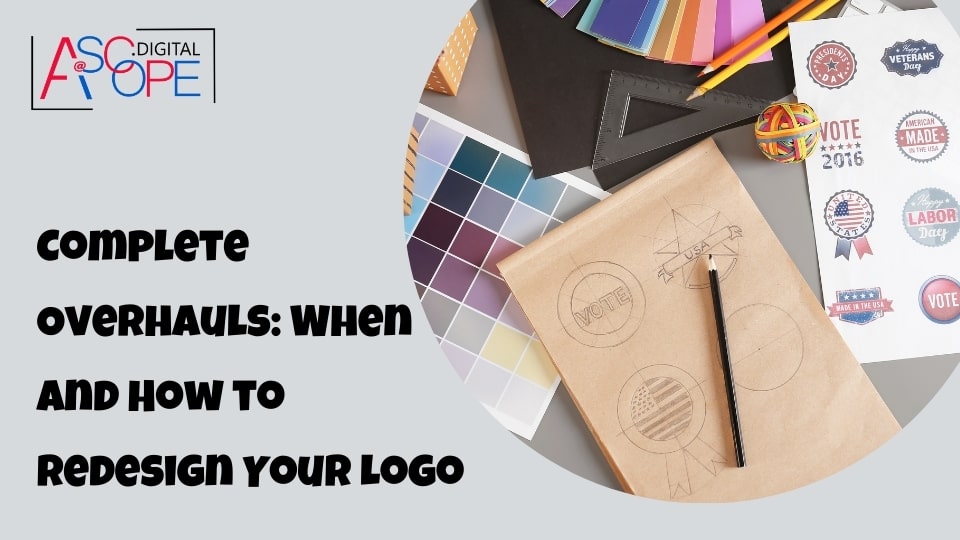Recognizing the Signs: When Is It Time to Redesign Your Logo?
A logo is more than just a visual identifier; it is the face of your brand, encapsulating your company’s identity, values, and mission in a single image. Over time, even the most iconic logos may need a refresh to stay relevant and effective. But how do you know when it’s time for a complete overhaul? Here are some key indicators that your logo might be due for a redesign.
Outdated Design
Design trends evolve, and what was modern and fresh a decade ago might now appear dated. If your logo looks like a relic from the past, it might be time to update it. An outdated logo can make your brand seem out of touch, which could deter potential customers who are looking for contemporary and forward-thinking companies. Modernizing your logo can help you stay relevant and appealing in a fast-changing market.
Company Evolution
As your business grows and evolves, your logo should reflect these changes. If your company’s mission, values, or target audience have shifted, your logo needs to align with the new direction. For example, if you started as a local business and have since expanded internationally, your logo might need to be more universally recognizable. Similarly, if you’ve diversified your product offerings, your logo should represent your broader scope.
Negative Feedback
Pay attention to feedback from customers, employees, and stakeholders. If you consistently hear that your logo is confusing, unappealing, or fails to convey your brand message, it’s time to consider a redesign. Constructive criticism can provide valuable insights into how your logo is perceived and can guide you in creating a more effective design.
Complexity
Simplicity is key in logo design. A logo that is too complex can be difficult to recognize and remember. If your current logo has intricate details that don’t scale well or become indistinct in smaller sizes, it’s time to simplify. A streamlined, clean design is more versatile and easier for customers to identify and recall.
Inconsistency Across Platforms
In today’s digital age, your logo appears across various platforms, from business cards to social media profiles. If your logo doesn’t translate well across these mediums—if it looks good on a website but not on mobile devices, for instance—redesigning it to ensure consistency is crucial. A versatile logo maintains its integrity and impact no matter where it’s displayed.
Merger or Acquisition
Mergers and acquisitions often necessitate a logo redesign. Combining two companies means creating a unified brand identity that reflects both entities. A new logo can symbolize the integration of the companies and the beginning of a new chapter, helping to foster a sense of unity and shared purpose.
Brand Repositioning
If you’re repositioning your brand to appeal to a new market segment or to convey a new brand message, your logo should support this strategy. A logo redesign can help signify the change and attract the desired audience. For instance, if you’re shifting from a budget-friendly image to a premium brand, your logo needs to reflect this new positioning with a more sophisticated design.
Assessing Your Current Logo: What’s Working and What’s Not
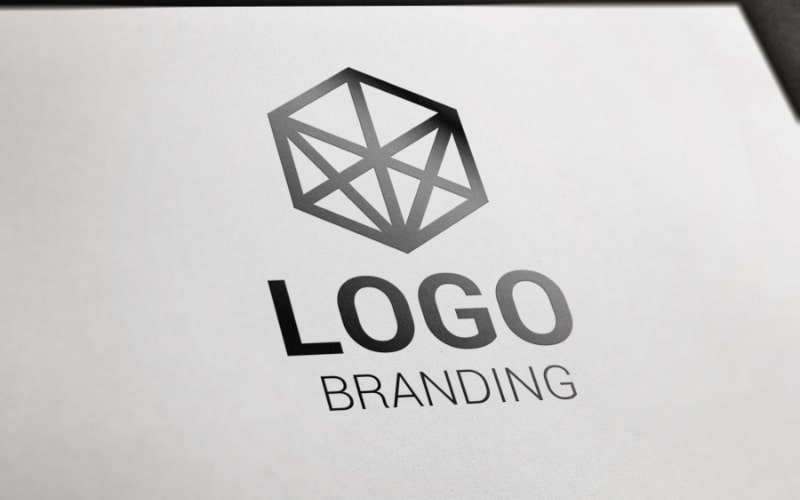
Before diving into a logo redesign, it’s essential to conduct a thorough assessment of your current logo. This evaluation helps identify which elements of your logo are effective and which ones need improvement. By understanding the strengths and weaknesses of your existing design, you can make informed decisions that lead to a more impactful and cohesive new logo. Here are key areas to consider when assessing your current logo:
Brand Alignment
Your logo should be a clear representation of your brand’s identity, values, and mission. Start by asking whether your current logo accurately reflects who you are as a company. Does it convey the right message to your target audience? For example, if your brand is known for innovation and cutting-edge technology, a logo with an outdated design might not be sending the right signal. Assess whether your logo aligns with your brand’s core attributes and how it fits within your overall brand strategy.
Visual Appeal
The aesthetic appeal of your logo is crucial in capturing and retaining attention. Evaluate the visual elements of your logo, such as color scheme, typography, and imagery. Are these elements visually appealing and harmonious? Consider current design trends and how they apply to your logo. While it’s important to remain true to your brand’s identity, incorporating contemporary design elements can enhance your logo’s appeal and relevance.
Memorability
A successful logo should be easily recognizable and memorable. Test whether your current logo sticks in people’s minds. Conduct surveys or focus groups to gather feedback on how well your logo is remembered. Simple, distinctive designs are often more memorable than complex ones. If people struggle to recall your logo or confuse it with another brand, it might be time to simplify and distinguish it more clearly.
Versatility
Your logo needs to be versatile enough to work across various mediums and formats. Analyze how your logo performs in different sizes, from business cards to billboards, and across different platforms, such as print, digital, and merchandise. A versatile logo maintains its integrity and readability in all contexts. If your logo loses clarity or impact when resized or adapted, consider redesigning it to enhance its versatility.
Scalability
Closely related to versatility, scalability refers to how well your logo adapts to different sizes. A scalable logo looks great whether it’s displayed on a tiny mobile screen or a large outdoor banner. Test your current logo’s scalability by resizing it to various dimensions. If the logo becomes distorted, loses detail, or becomes unreadable at smaller sizes, it’s a sign that you need a redesign. Effective logos often use simple, bold designs that scale well without losing their essence.
Uniqueness
In a crowded market, standing out is essential. Evaluate your logo’s uniqueness by comparing it with competitors’ logos. Does your logo differentiate your brand effectively, or does it blend in with others? A unique logo helps create a distinct brand identity and avoids confusion with other brands. If your logo shares similarities with competitors, you may need to redesign it to carve out a unique visual niche.
Timelessness
While staying current with design trends is important, your logo should also possess an element of timelessness. Assess whether your logo can stand the test of time without appearing dated. Trendy logos can quickly become obsolete, requiring frequent updates. A timeless logo combines classic design principles with modern touches, ensuring longevity and reducing the need for constant redesigns.
Setting Clear Objectives: What Do You Want to Achieve with the Redesign?
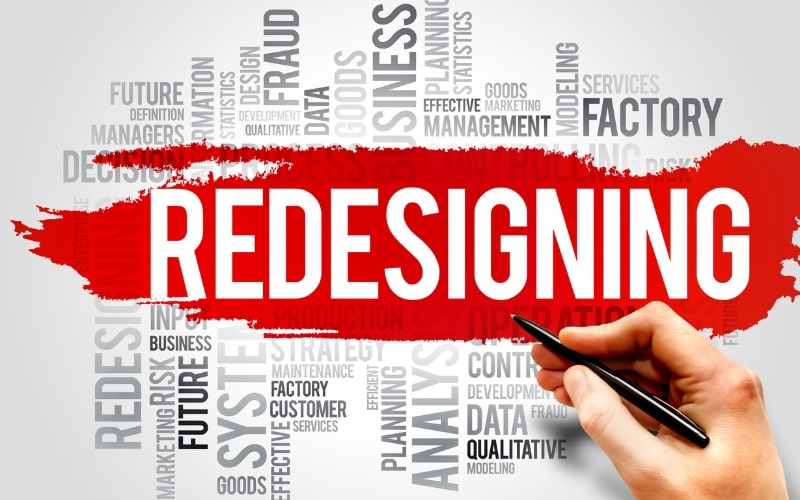
Redesigning a logo is a significant step for any brand, and it’s crucial to set clear objectives to ensure the process is successful. Without defined goals, you risk ending up with a logo that doesn’t effectively serve your brand or resonate with your audience. Here’s how to establish and expand on clear objectives for your logo redesign.
Enhancing Brand Identity
One of the primary objectives of a logo redesign is to better align the logo with your brand identity. This involves ensuring that the logo reflects your company’s mission, values, and personality. Begin by reviewing your brand’s core attributes and how you want to be perceived by your audience. If your current logo doesn’t convey these elements effectively, the redesign should aim to bridge this gap. For example, if your brand emphasizes innovation and forward-thinking, your new logo should incorporate modern design elements that convey these qualities.
Improving Visual Appeal
A visually appealing logo can attract more attention and leave a lasting impression. Consider what aspects of your current logo might be visually unappealing or outdated. Your objective might be to create a more contemporary, eye-catching design that stands out in the market. This can involve updating the color palette, typography, and graphic elements to create a more cohesive and attractive visual identity.
Ensuring Versatility
Your logo needs to look good across various platforms and formats, from business cards to websites and social media profiles. One objective should be to enhance the versatility of your logo. This means designing a logo that maintains its integrity and readability whether it’s scaled up for a billboard or scaled down for a mobile app icon. Versatile logos often employ simple, bold designs that are adaptable to different contexts.
Increasing Memorability
Memorability is key to effective branding. Your logo should be easily recognizable and memorable to your audience. If your current logo is too complex or generic, the redesign should focus on creating a simpler, more distinctive design. This can involve incorporating unique elements or simplifying existing ones to ensure that your logo stands out and is easy to recall.
Reflecting Company Growth and Evolution
As your company grows and evolves, your logo should evolve with it. An objective of the redesign might be to reflect the changes and growth your company has undergone. For instance, if you’ve expanded your product lines or services, your logo should encapsulate this broader scope. Similarly, if you’ve entered new markets or undergone a significant shift in your business strategy, your logo should communicate these developments to your audience.
Appealing to a New Audience
If your brand is targeting a new demographic or entering a new market, your logo should appeal to this new audience. This could involve redesigning your logo to be more relevant and attractive to different age groups, cultural backgrounds, or consumer preferences. Research your new target audience to understand their tastes and expectations, and incorporate these insights into your logo redesign.
Correcting Misinterpretations
Sometimes, a logo redesign is necessary to address any negative perceptions or misunderstandings associated with the current logo. If your logo has been misinterpreted or has negative connotations, your objective should be to create a design that more accurately and positively represents your brand. This can involve rethinking symbols, colors, and typography to eliminate any elements that might be misconstrued.
Researching Trends and Competitors: Staying Relevant in Your Industry
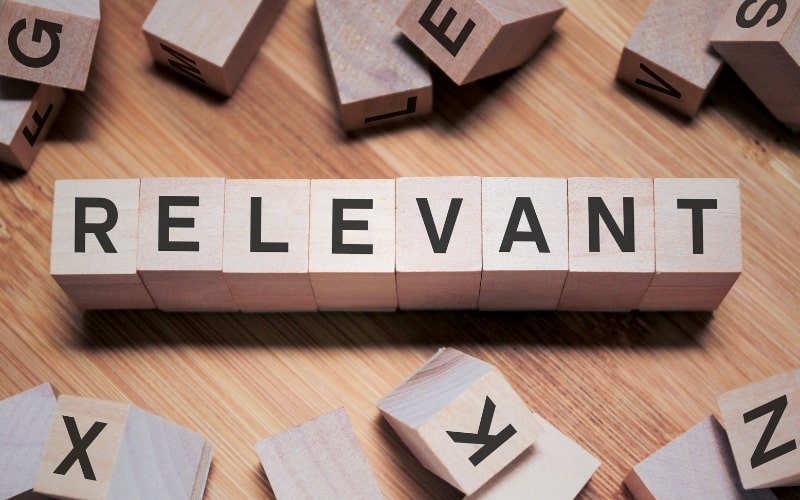
When it comes to redesigning your logo, understanding current trends and analyzing competitors can provide invaluable insights. This process not only ensures your logo remains contemporary but also helps differentiate your brand in a crowded market. Here’s how to effectively research trends and competitors to stay relevant in your industry.
Understanding Industry Trends
Keeping up with industry trends is essential for creating a logo that feels fresh and relevant. Trends in logo design can include changes in color schemes, typography, and overall design styles. Start by researching what’s popular in your industry. Look at leading brands and see what common elements they are using. Are they embracing minimalist designs, vibrant colors, or abstract shapes? By understanding these trends, you can create a logo that feels current without being a carbon copy of what’s already out there.
Analyzing Competitors
Studying your competitors’ logos can reveal what works and what doesn’t in your market. Create a list of your main competitors and analyze their logos. Consider the following aspects:
- Color Schemes: What colors are they using? Colors can evoke specific emotions and associations. For example, blue often conveys trust and professionalism, while green might suggest eco-friendliness or growth.
- Typography: What kind of fonts are popular? Serif fonts can appear traditional and reliable, while sans-serif fonts often look modern and clean.
- Imagery and Symbols: Are competitors using abstract symbols, literal representations, or simple wordmarks? Understanding these choices can help you decide on the direction for your own logo.
By examining these elements, you can identify gaps in the market and opportunities to differentiate your brand.
Evaluating Your Unique Value Proposition
Your logo should reflect your brand’s unique value proposition (UVP) and differentiate you from competitors. Ask yourself what sets your brand apart. Is it your innovative approach, exceptional customer service, or eco-friendly products? Your logo should visually convey this uniqueness. For instance, if sustainability is your UVP, incorporating green elements or nature-inspired designs can reinforce this message. This ensures your logo not only aligns with industry trends but also highlights what makes your brand special.
Incorporating Modern Design Elements
While it’s important to stay relevant, you don’t want your logo to become outdated quickly. Aim to incorporate modern design elements that have staying power. This could include clean lines, balanced compositions, and versatile color palettes. Avoid overly trendy elements that might not stand the test of time. For example, while gradient logos are popular, they should be used in a way that ensures longevity. A balanced approach helps create a logo that feels both contemporary and timeless.
Seeking Inspiration Beyond Your Industry
Looking outside your industry can provide fresh perspectives and innovative ideas. Explore logos from different sectors, especially those known for their cutting-edge design. For example, tech companies often lead the way in minimalist, user-friendly designs. Incorporating successful design principles from other industries can help your logo stand out while still feeling relevant. This cross-industry inspiration can spark creativity and lead to a more unique and impactful design.
Balancing Trends with Brand Identity
While it’s crucial to stay current, your logo must also stay true to your brand’s identity. Trends should enhance, not overshadow, your core brand message. For instance, if your brand is known for its heritage and tradition, a modern, minimalist logo might not resonate with your audience. Strive for a balance where the logo feels updated yet still reflective of your brand’s history and values. This ensures consistency and fosters trust with your audience.
Testing and Feedback
Before finalizing your new logo, gather feedback from different stakeholders, including employees, customers, and industry experts. Use focus groups or surveys to understand their perceptions and reactions. This step helps ensure that the redesigned logo resonates with your target audience and accurately reflects your brand. Testing different versions and iterating based on feedback can lead to a more refined and effective design.
Collaborating with Designers: Finding the Right Creative Partner
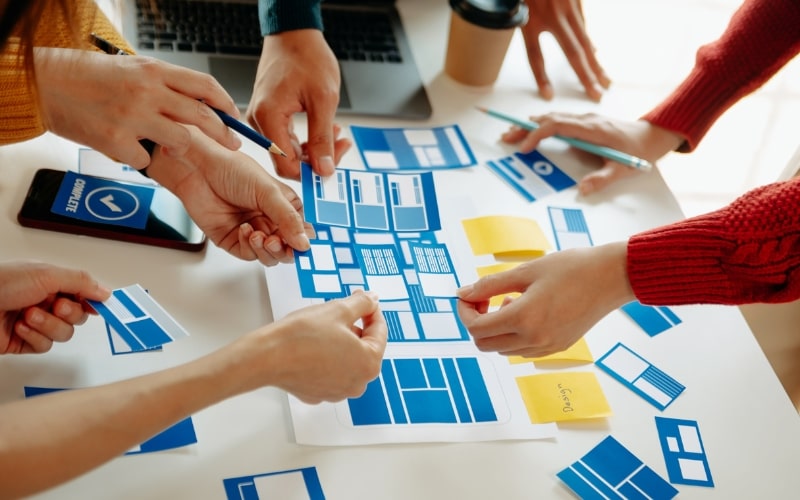
Redesigning your logo is a significant endeavor that can greatly impact your brand’s identity and perception. Collaborating with a professional designer or design team is crucial to ensuring the success of this process. Finding the right creative partner involves several key steps, each contributing to a seamless collaboration and a final product that effectively represents your brand. Here’s how to navigate this journey.
Identifying Your Needs and Goals
Before reaching out to potential designers, it’s essential to have a clear understanding of your needs and goals for the logo redesign. Define what you want to achieve with the new logo, whether it’s modernizing your image, reflecting a change in your company’s direction, or differentiating yourself from competitors. Having a well-defined brief that outlines your objectives, brand values, target audience, and any specific design preferences will provide a solid foundation for your collaboration with designers.
Researching Potential Designers
Start your search by looking at portfolios of various designers and design agencies. Focus on those who have experience in your industry or who have worked on projects similar to yours. Pay attention to the diversity and quality of their work, noting if they can adapt their style to fit different brands and requirements. Platforms like Behance, Dribbble, and LinkedIn can be valuable resources for finding talented designers.
Evaluating Their Design Process
Understanding a designer’s process can give you insight into how they approach projects and solve design problems. Ask potential designers to explain their workflow, from initial concepts to final revisions. A thorough process typically includes stages like research, brainstorming, sketching, prototyping, and feedback rounds. Ensure their process aligns with your expectations and that they emphasize communication and collaboration throughout the project.
Assessing Communication Skills
Effective communication is key to a successful collaboration. During initial discussions, evaluate the designer’s ability to listen, understand your vision, and articulate their ideas clearly. Good designers should ask insightful questions to fully grasp your brand and project requirements. Clear, open communication ensures that both parties are on the same page, reducing misunderstandings and streamlining the design process.
Checking References and Reviews
Don’t hesitate to ask for references or read reviews from previous clients. This can provide valuable insights into the designer’s reliability, work ethic, and ability to meet deadlines. Positive feedback from past clients can give you confidence in their professionalism and the quality of their work. Conversely, any red flags or consistent negative feedback should be taken seriously.
Considering Compatibility and Chemistry
A successful collaboration often hinges on personal chemistry and mutual respect. During your interactions, consider whether you feel comfortable and confident working with the designer. Compatibility in working styles and personalities can lead to a more enjoyable and productive partnership. Trust your instincts—if something doesn’t feel right, it might be worth exploring other options.
Discussing Budget and Timeline
Budget and timeline are crucial aspects of any design project. Be upfront about your budget and ensure that the designer’s rates align with it. Discuss the project timeline and ensure that both parties agree on deadlines and deliverables. A transparent discussion about budget and timeline helps avoid misunderstandings and ensures that the project proceeds smoothly.
The Redesign Process: From Concept to Completion

Redesigning a logo is a comprehensive journey that involves multiple stages, each critical to achieving a final product that truly represents your brand. Understanding and navigating the redesign process from concept to completion ensures that your new logo effectively communicates your brand’s identity and values. Here’s a step-by-step guide to the entire process:
Initial Consultation and Briefing
The redesign process begins with an initial consultation where you, the client, and the designer discuss your vision, goals, and expectations. This stage is crucial for establishing a clear understanding of your brand’s identity, the reasons for the redesign, and what you hope to achieve. A detailed brief is created, outlining key elements such as target audience, brand values, design preferences, and any specific requirements. This brief serves as the foundation for the entire redesign process.
Research and Discovery
The next step involves thorough research and discovery. The designer delves into your industry, competitors, and current design trends to gather insights that will inform the design process. This research helps identify what works and what doesn’t in your market, ensuring that your new logo will stand out while remaining relevant. Understanding your competitors’ visual identities can also reveal opportunities for differentiation.
Concept Development
With a solid understanding of your brand and the market, the designer begins developing initial concepts. This stage involves brainstorming and sketching multiple ideas, exploring various styles, and experimenting with different elements such as colors, fonts, and symbols. The goal is to generate a range of creative options that align with the brief. These rough sketches and concepts are then refined into more polished designs.
Presentation and Feedback
The designer presents the initial concepts to you for review. This presentation typically includes several options, each with different design approaches and rationales. Your feedback at this stage is crucial. Provide clear and constructive comments on what you like, what you don’t, and why. This collaborative process ensures that the final design aligns with your vision and brand identity. Open communication and a willingness to consider different perspectives are key to refining the designs effectively.
Refinement and Iteration
Based on your feedback, the designer refines the selected concept. This stage involves making adjustments to colors, typography, layout, and other elements to ensure the design meets your expectations. Multiple rounds of revisions may be necessary to fine-tune the logo. Iterative feedback helps in honing the design until it perfectly encapsulates your brand’s essence. Patience and attention to detail are essential during this phase to achieve a polished and cohesive final design.
Finalization and Approval
Once the design is refined and you are satisfied with the result, the final logo is prepared for approval. This stage includes creating various versions of the logo, such as color variations, black-and-white versions, and different sizes for different applications. The designer ensures that the logo is versatile and looks great across all intended platforms and mediums. You give final approval before moving to the next step.
Delivery and Implementation
After approval, the designer prepares the final logo files for delivery. These files are typically provided in various formats (e.g., PNG, JPEG, SVG, EPS) to ensure they can be used across different platforms and media. The designer may also provide a style guide that outlines how to use the logo, including color codes, typography guidelines, and usage examples. This guide helps maintain consistency in your brand’s visual identity. Implementing the new logo involves updating all brand materials, including websites, social media profiles, business cards, and promotional items.
Launching Your New Logo: Effective Strategies for a Smooth Transition

Introducing a new logo is a significant milestone for any brand. It marks a fresh start and can reinvigorate your brand’s identity. However, launching a new logo involves more than just unveiling the new design; it requires a well-planned strategy to ensure a smooth transition and to maximize the impact on your audience. Here’s a comprehensive guide to effectively launching your new logo.
Develop a Launch Plan
A successful logo launch begins with a detailed plan. Outline the steps you will take to introduce the new logo to your internal team and external audience. Set a timeline for each phase of the launch, from initial teasers to the official unveiling. Include key milestones, such as updating all brand materials and communicating the change to stakeholders. A well-structured plan helps coordinate efforts and ensures a cohesive rollout.
Communicate Internally
Before introducing the new logo to the public, it’s crucial to get buy-in from your internal team. Present the new logo to your employees, explaining the reasons behind the redesign and how it aligns with the company’s vision and goals. Provide training and resources to help employees understand and use the new logo correctly. Internal acceptance is key to a unified external launch, as your team members will be ambassadors of the new brand identity.
Create Teasers and Build Anticipation
Generate excitement and curiosity by creating teasers leading up to the launch. Use social media, email campaigns, and your website to drop hints about the upcoming change. Teasers can include blurred images, partial reveals, or countdowns to the launch date. Building anticipation helps engage your audience and creates a sense of intrigue around the new logo.
Prepare Your Audience
It’s important to prepare your audience for the change to avoid confusion. Announce the upcoming logo redesign in advance, explaining the reasons behind it and what they can expect. Share the story and inspiration behind the new logo, highlighting how it reflects your brand’s evolution. Transparency builds trust and helps your audience feel included in the transition process.
Coordinate a Multi-Channel Launch
On the day of the launch, unveil the new logo across all channels simultaneously. Update your website, social media profiles, email signatures, business cards, and any other branded materials. Consistency is crucial to reinforcing the new visual identity. A coordinated multi-channel launch ensures that your audience encounters the new logo everywhere they interact with your brand, solidifying the change in their minds.
Celebrate the Launch
Make the launch a celebratory event to emphasize the significance of the new logo. Host an event, either virtual or in-person, to officially unveil the new design. Share behind-the-scenes content, such as the design process or interviews with the creative team, to add a personal touch. Use the opportunity to engage with your audience through live Q&A sessions, contests, or giveaways. Celebrating the launch creates a positive association with the new logo and enhances its impact.
Monitor and Gather Feedback
After the launch, actively monitor the reception of the new logo. Pay attention to feedback from customers, employees, and other stakeholders. Use social media listening tools, surveys, and direct feedback channels to gather insights on how the new logo is being perceived. Address any concerns or confusion promptly and be open to making minor adjustments if necessary. Gathering feedback helps you understand the effectiveness of the launch and informs any future branding efforts.
Conclusion
Recognizing the signs that it’s time to redesign your logo is crucial for maintaining a strong brand identity and staying competitive in the market. Whether it’s due to an outdated design, company evolution, mergers, negative feedback, rebranding efforts, digital simplification, or legal issues, understanding when and how to embark on a logo redesign can significantly enhance your brand’s presence.
By setting clear objectives, conducting thorough research, collaborating with professional designers, and carefully planning the launch of your new logo, you can ensure a successful transition that resonates with your audience and reflects your company’s growth. A well-executed logo redesign not only modernizes your brand but also communicates your company’s evolution and values to your customers. It can differentiate you from competitors, improve your digital presence, and avoid legal complications. However, a redesign should not be taken lightly. It requires careful consideration, planning, and execution to ensure it aligns with your overall brand strategy and goals.
If your website isn’t getting the traffic you expect, a logo redesign might be part of the solution, but it’s essential to consider other factors as well. Read more on the other reasons why your website isn’t getting traffic, as addressing these can help you create a comprehensive strategy for improving your online presence and driving more visitors to your site. In summary, a thoughtful and strategic logo redesign can rejuvenate your brand, engage your audience, and support your business objectives, making it a worthwhile investment for any company looking to enhance its brand identity.


